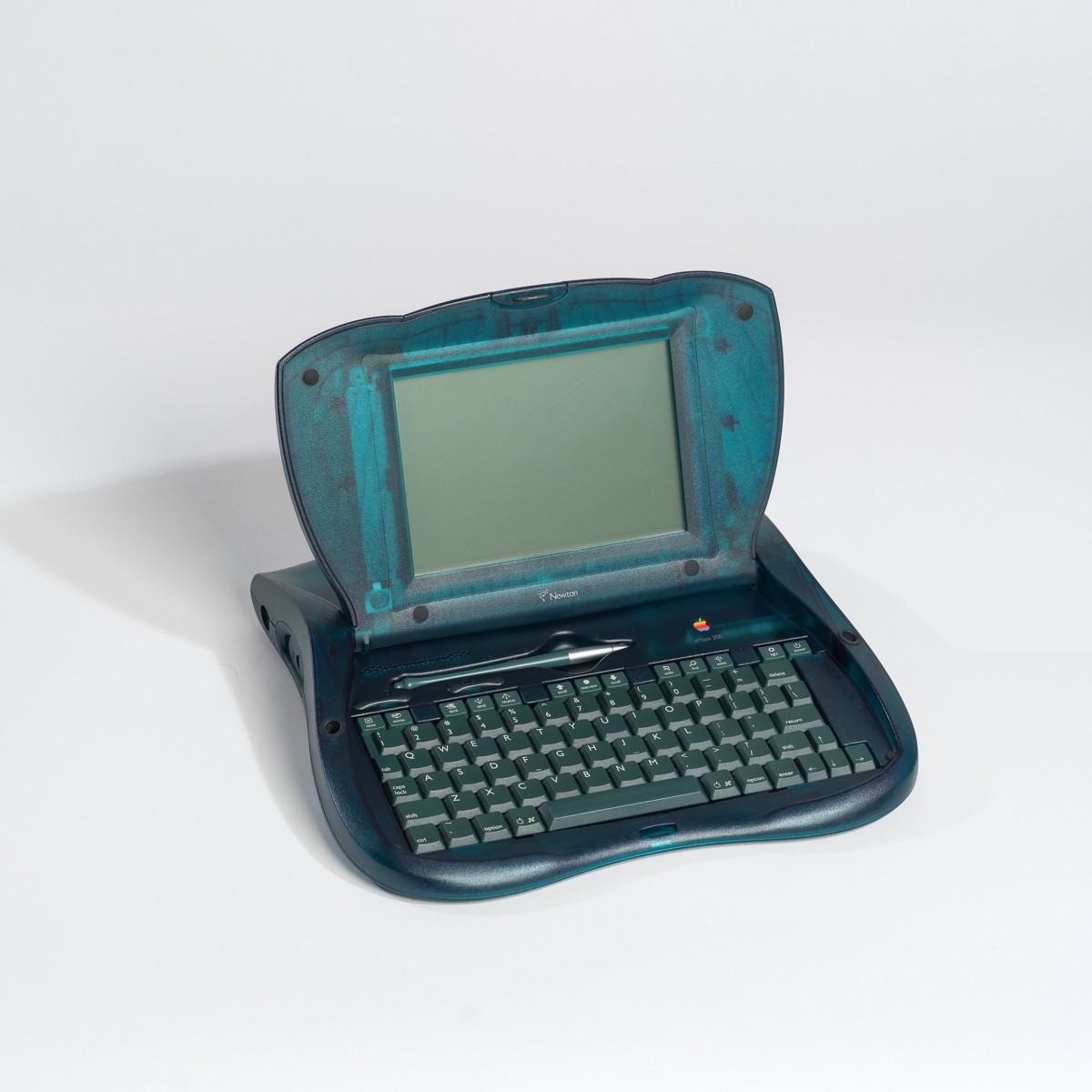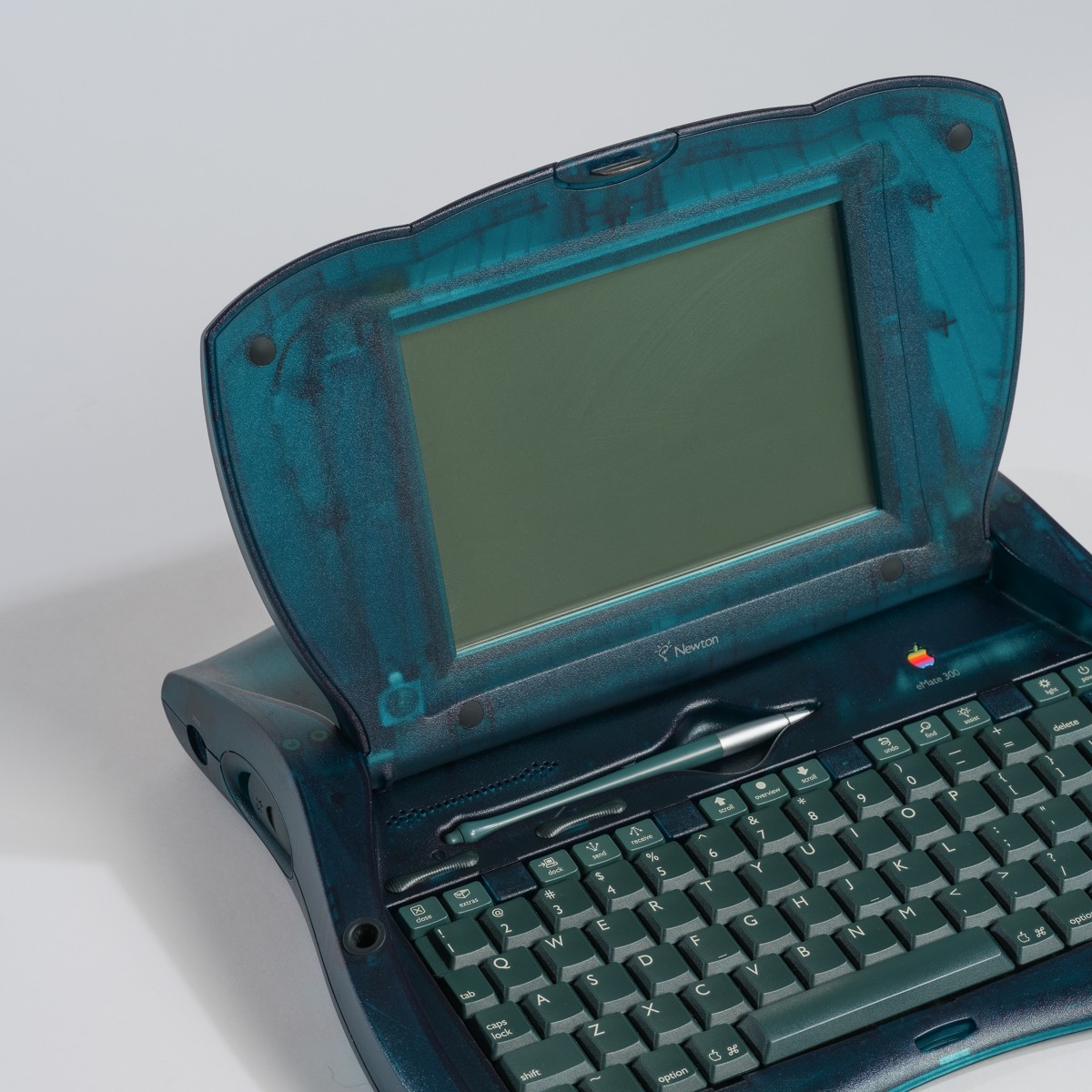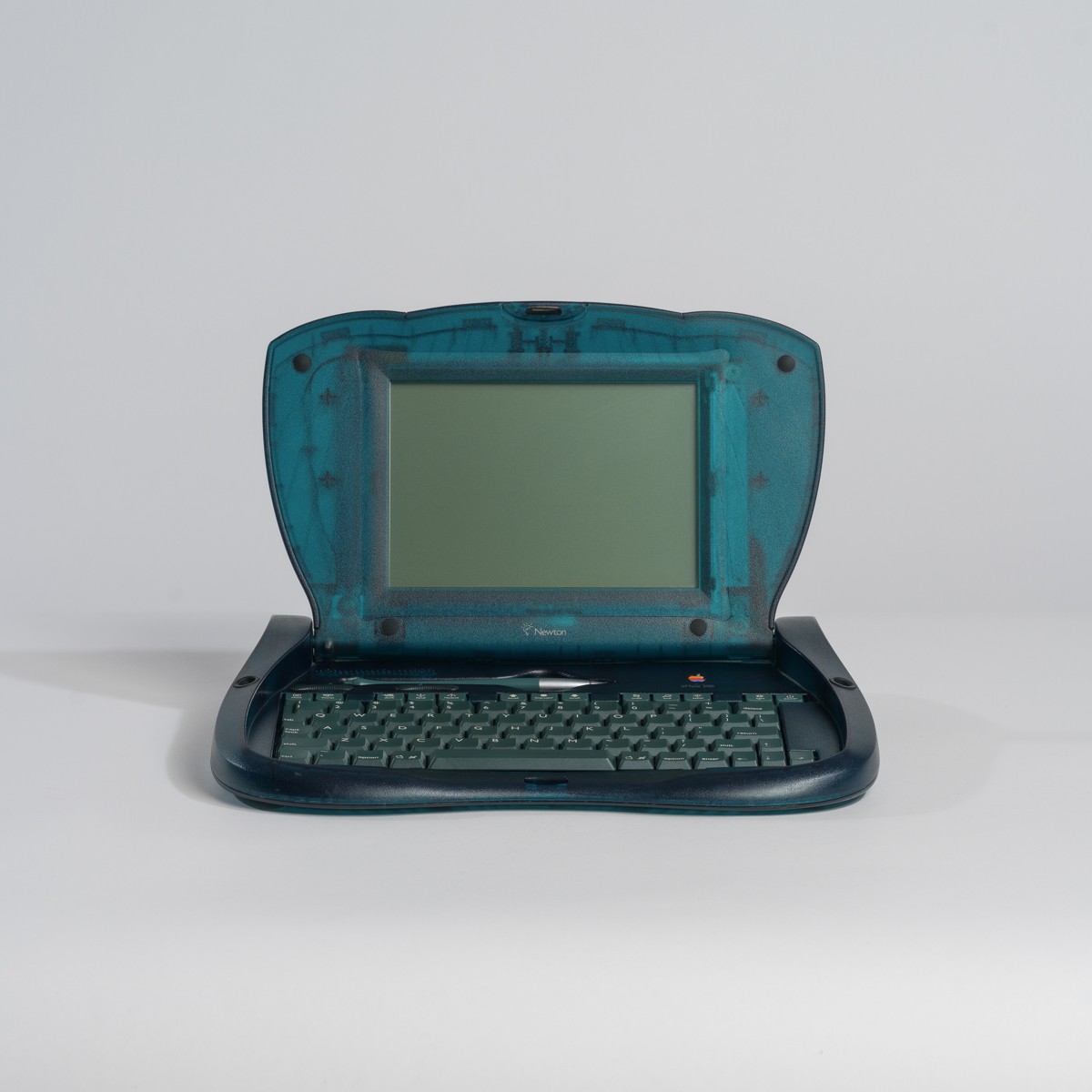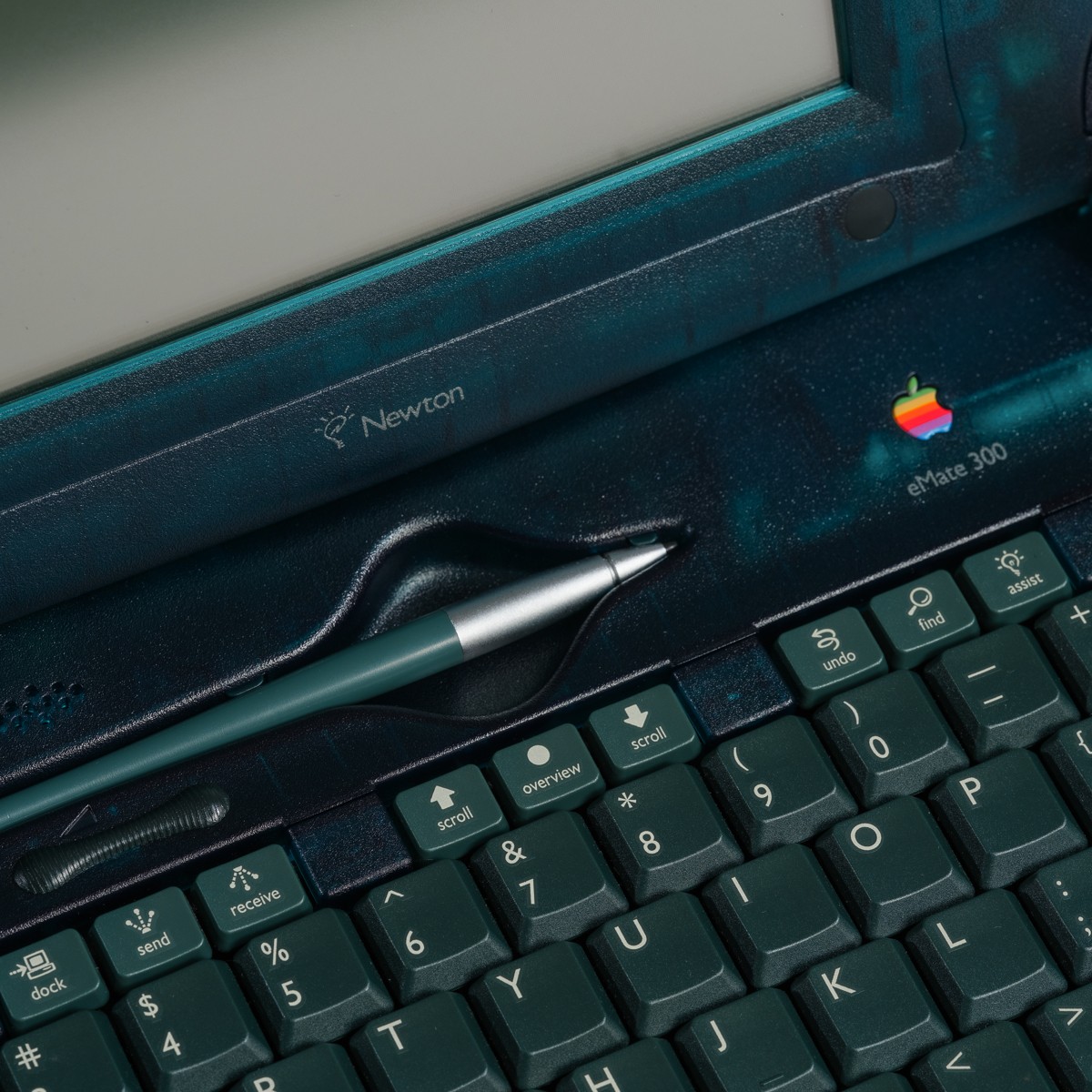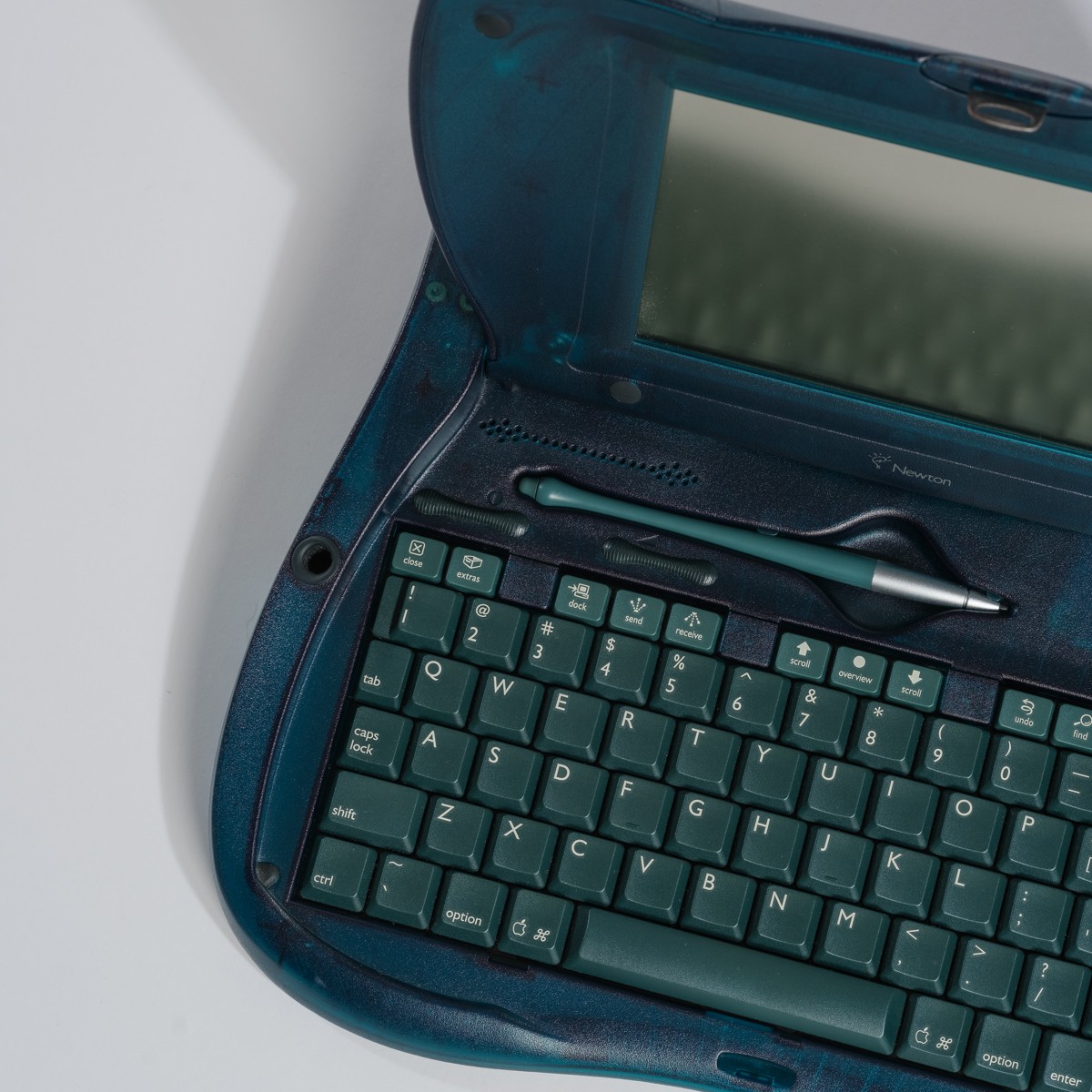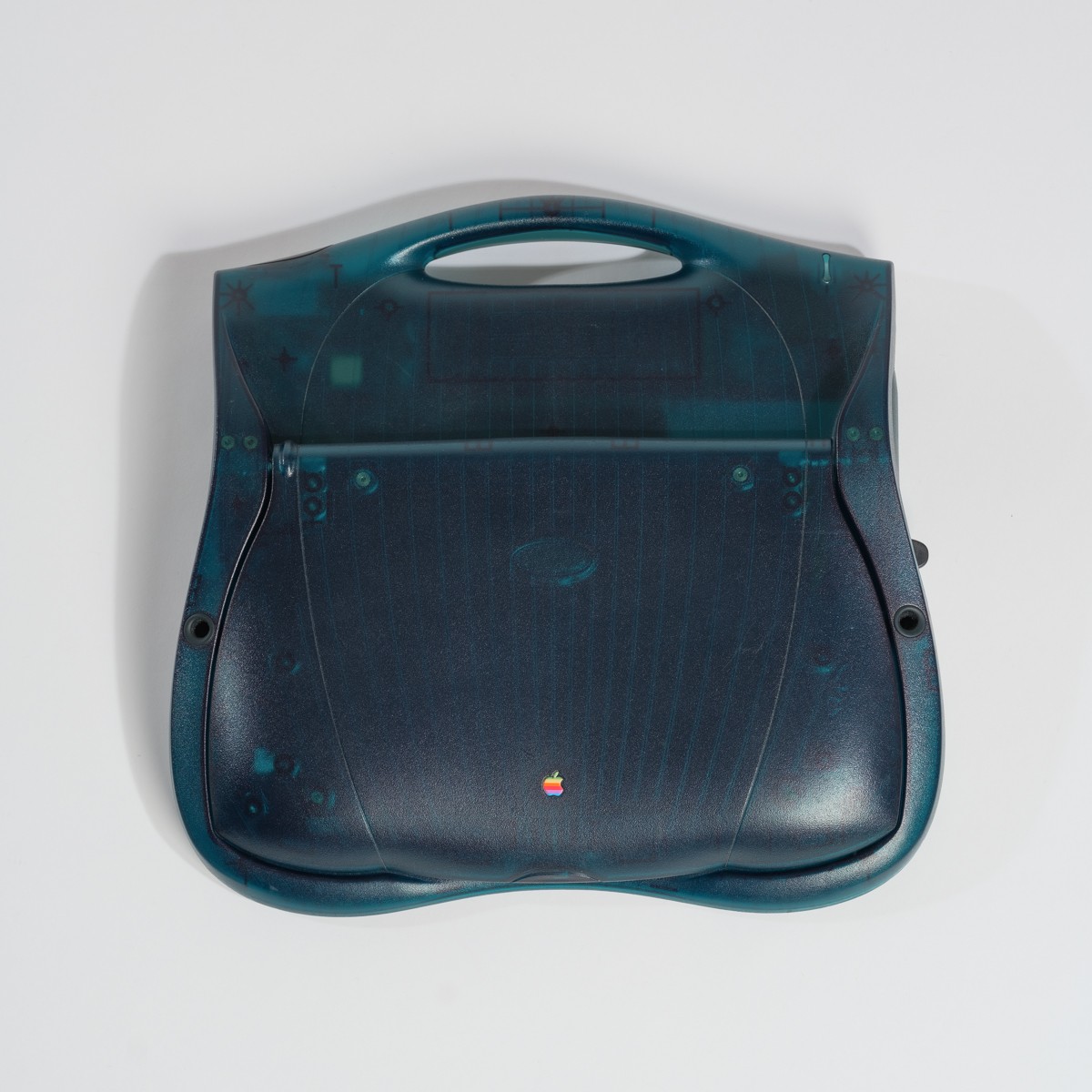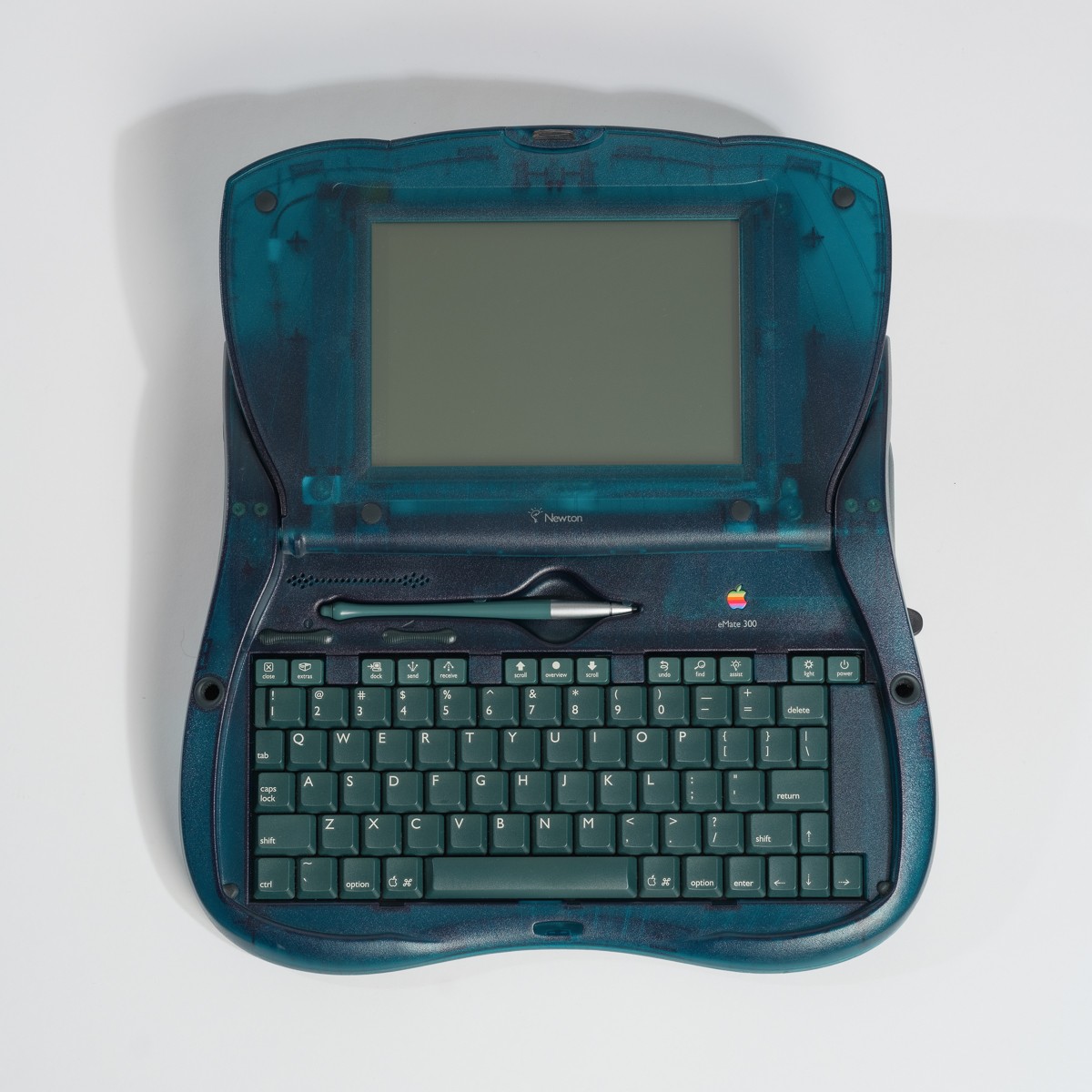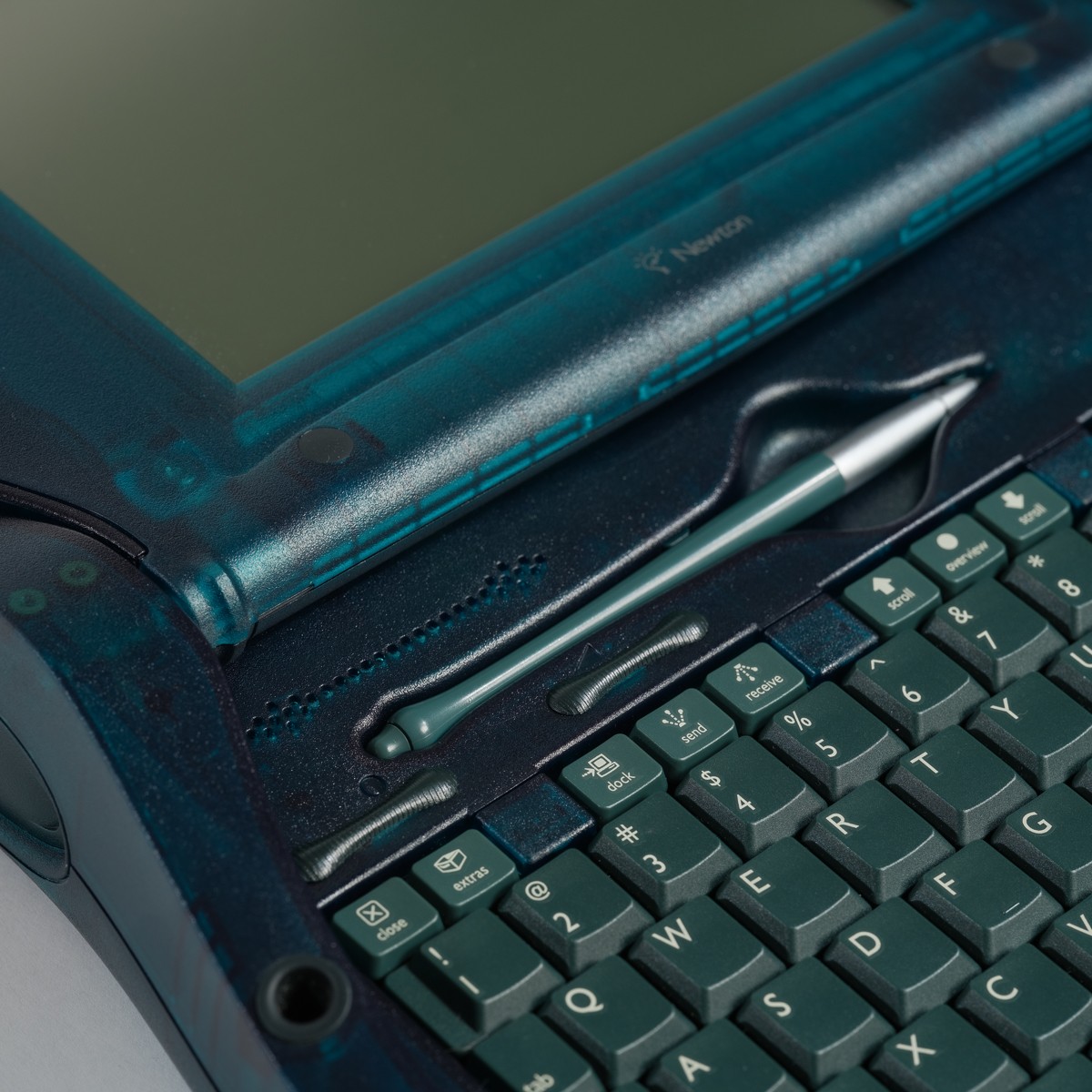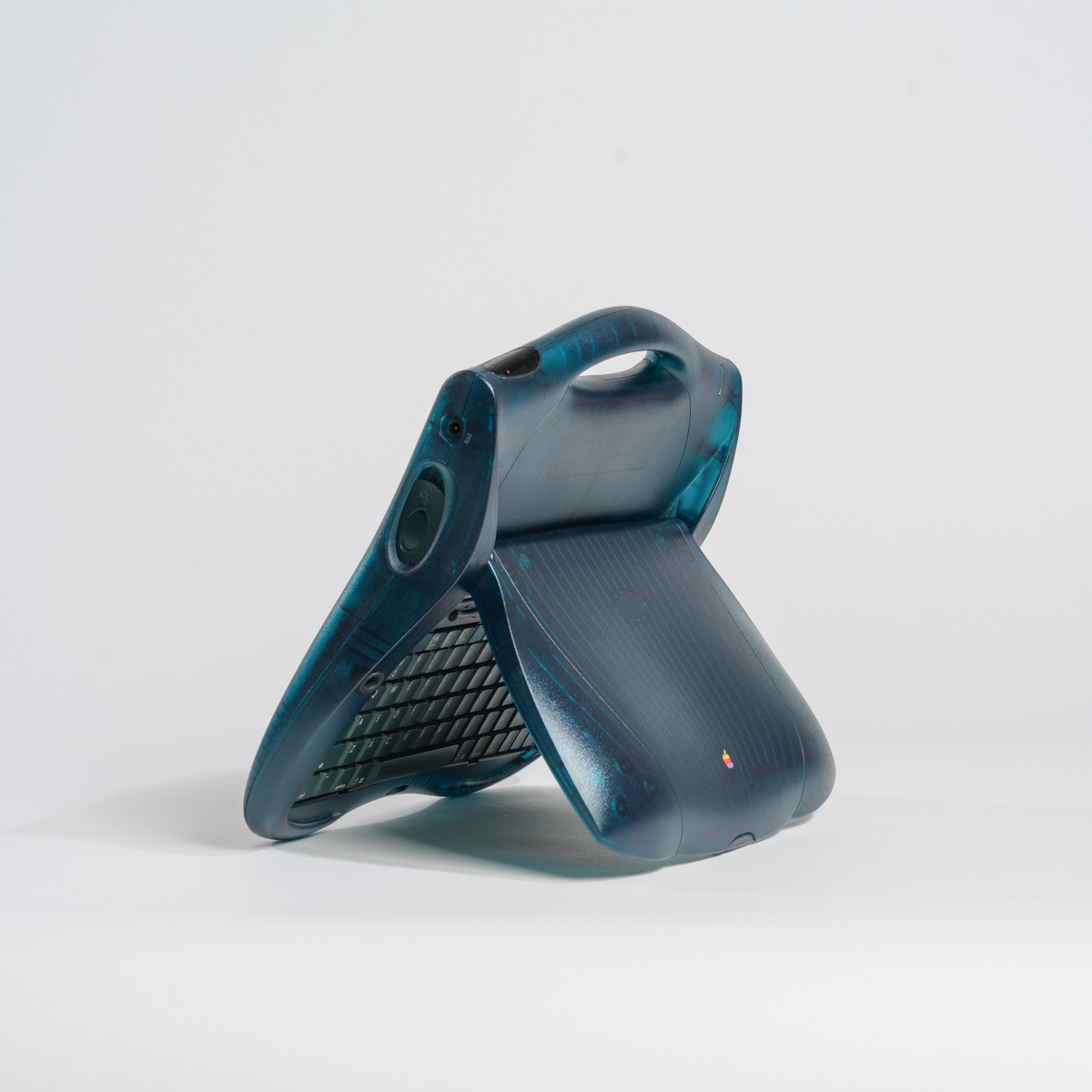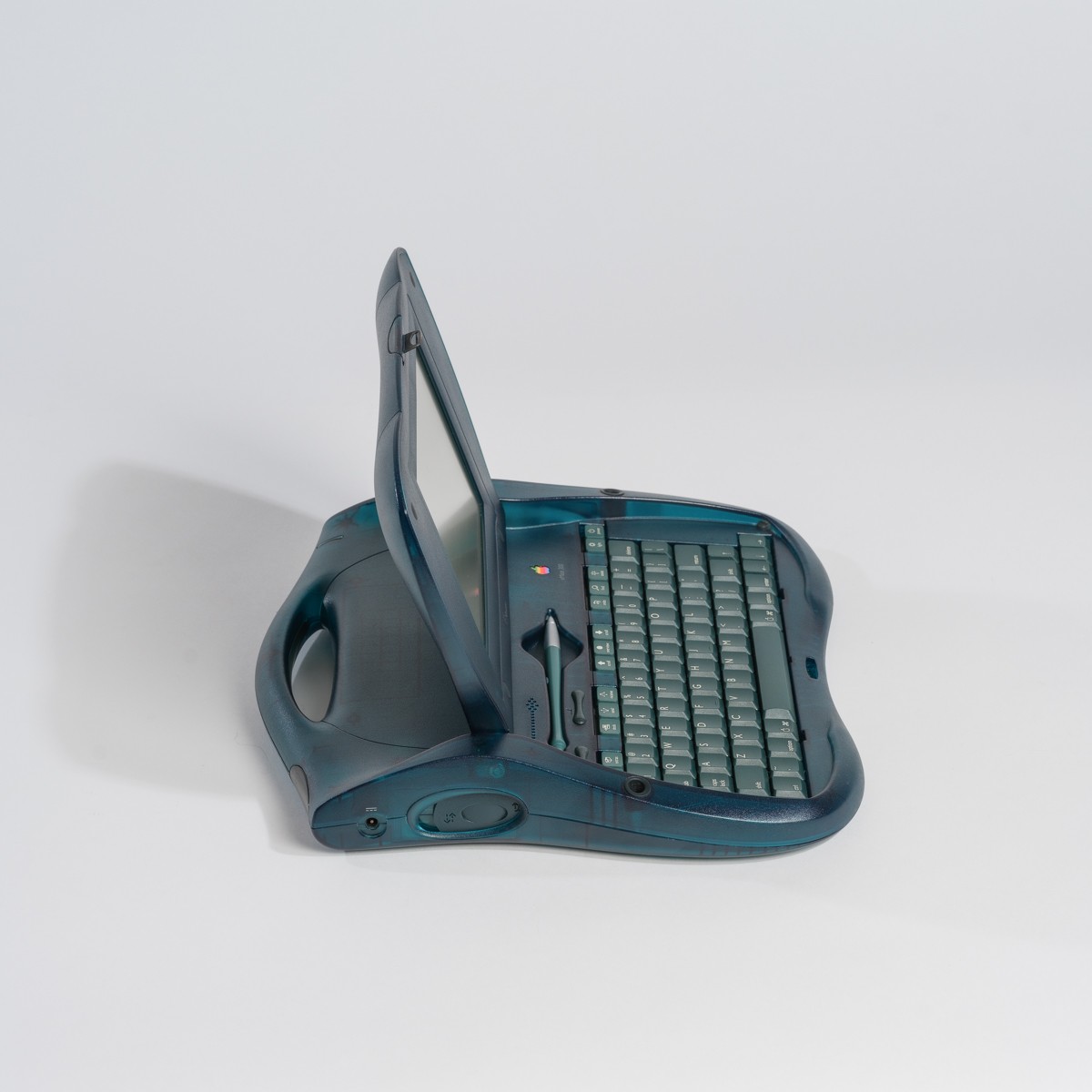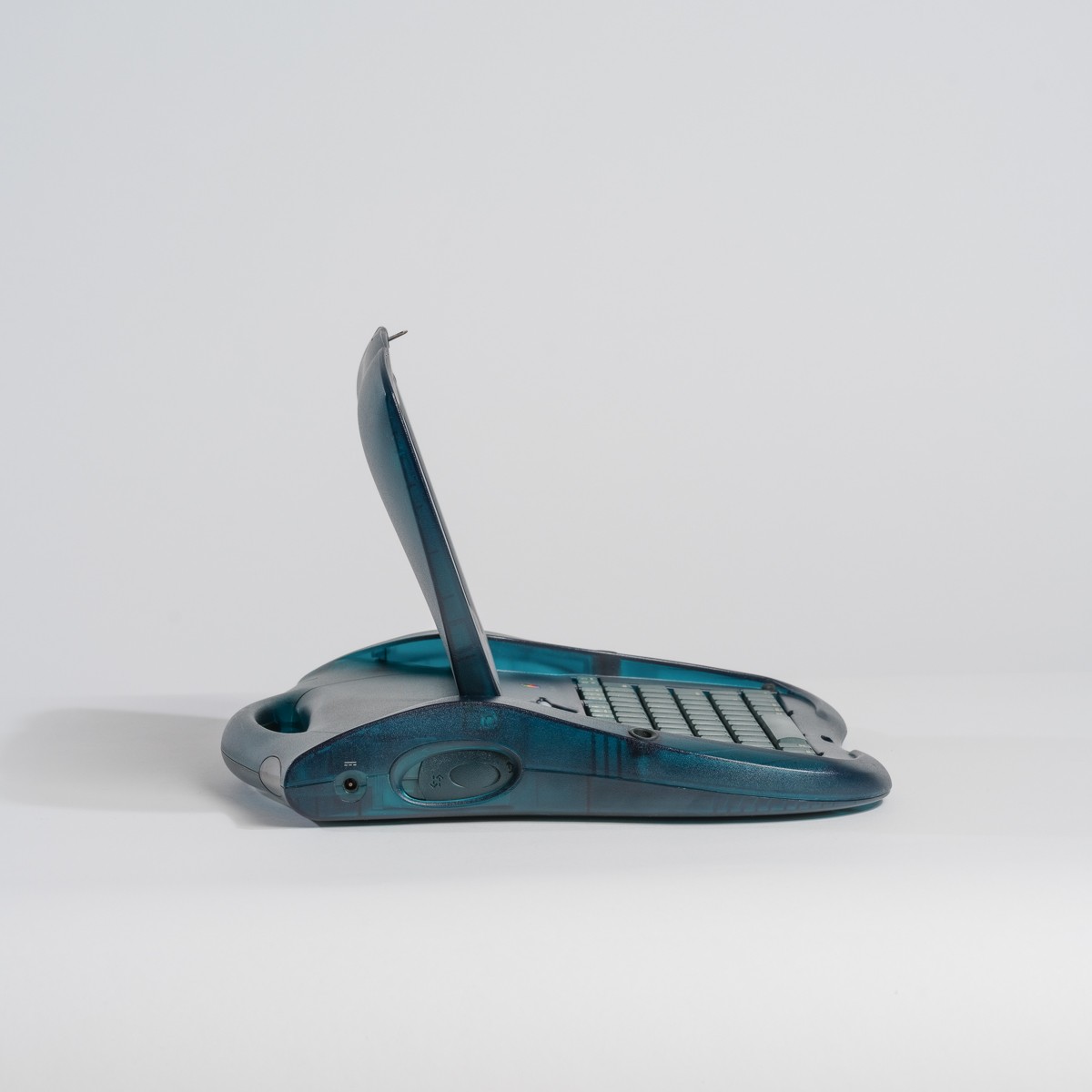Newton eMate 300
Released in 1997, Newton eMate 300 was a unique take on Apple’s Newton PDA line, designed specifically for education. Featuring a translucent green clamshell case with a built-in keyboard, the eMate 300 combined the portability of a PDA with the usability of a small laptop. It ran Newton OS and included handwriting recognition, note-taking, and organizational tools tailored for students. Despite its innovative approach, the eMate 300 was discontinued in 1998 when Apple phased out the Newton platform. However, its design and concept influenced later Apple products, including the iBook G3, making it an interesting precursor to modern portable devices.
Technical Characteristics
Portable Devices
25 MHz ARM 710a RISC
1 MB
8 MB of non-volatile ROM (operating system and built-in apps), PCMCIA Type II slot for additional storage or expansion cards
6.8-inch (diagonal) monochrome LCD screen (with backlighting)
480×320 pixels
Resistive touchscreen with stylus input, handwriting recognition (Newton Intelligence technology), full QWERTY keyboard
1 x PCMCIA Type II slot for expansion (modem, additional storage, etc.), 1 x Serial port (for connection to a Macintosh or Windows PC), Infrared (IrDA) port for wireless data transfer
Powered by a rechargeable built-in nickel-metal hydride (NiMH) battery or an external AC adapter, approximate battery life: 28–30 hours
Newton OS 2.1
Height: 51 mm, width: 305 mm, depth: 229 mm, weight: 1.8 kg
Built-in speaker, microphone for voice notes
Calendar, notes, and contact management tools, expandable with various third-party apps, durable, ruggedized case for school environments
